- The John Malkovich EXCLUSIVE
- Marlborough Hits 50
- The Six BEST wine books
- Ventoux – Next Century Wines
- Ageing English Fizz: How, Why and What
- The Ten Wines Never to be Without
- The New Face of Languedoc
- Ukraine – Wine not War
- Our WINES OF THE YEAR (2023)
- A Southern French Feast
- ORANGE WINE Part 1
- ORANGE WINE Part 2
- Ancient Vines to the Rescue in St Mont
- Light Strike: Wine’s Not-So-Secret Scandal
- Grower Champagne with Lea & Sandeman
- Going Gaga for Garnacha
- SASSICAIA – The Insider’s Guide
- UK Wine’s Counterculture
- News & Views
- Rías Baixas – Mists, Myths, Mariscos
- Rías Baixas – Albariño with Attitude
- Red Wine Headaches: A Eureka Moment?
- Wine and War – Palestine, Israel and Lebanon
- We Need To Talk About Rosé
- Wines to Combat Climate Change
Summary
It’s popular, it’s pleasurable – and it’s much misunderstood. Rosé is having a moment and yet the myths remain pervasive.
So that’s our cue to ride to the rescue, busting a heap of rosé myths as we go, shooting down cardinal sins from the hip, and urging a radical re-think of rosé all round.
We hear from rosé experts Elizabeth Gabay MW and Ben Berhneim as well as fifth-generation producer Caroline Deforges of the world-famous Clos Cibonne estate in the south of France.
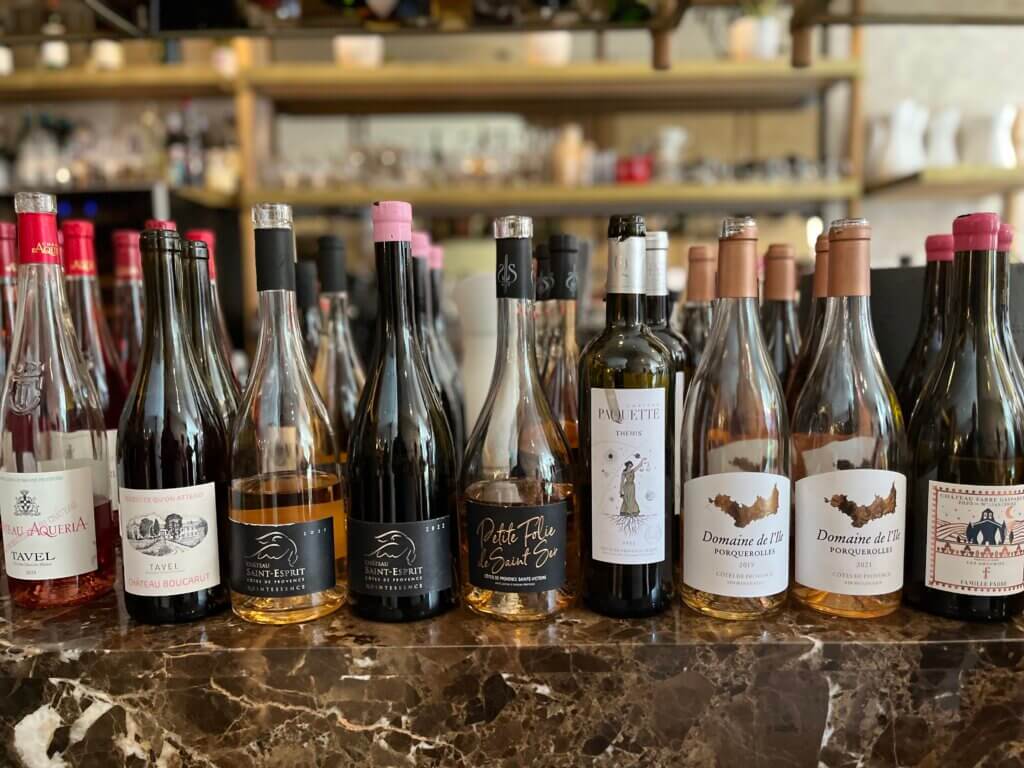
Rosé is often patronisingly dismissed as simple and forgettable. Party plonk best drunk pool-side, ideally while wearing a bikini. And yet, alongside the rise of pink Prosecco and posh Provençal super-cuvées, there’s a rosé revolution going on that you really don’t want to miss.
As one of our interviewees puts it: ‘open your mind’ and ‘you will be surprised!’
So here’s to freeing our minds and drinking the sunset!
We also recommend a bunch of brilliant rosé wines so you can join in the fun – more below.
Starring
- Elizabeth Gabay MW and Ben Bernheim
- Caroline Deforges, Clos Cibonne
- Susie & Peter
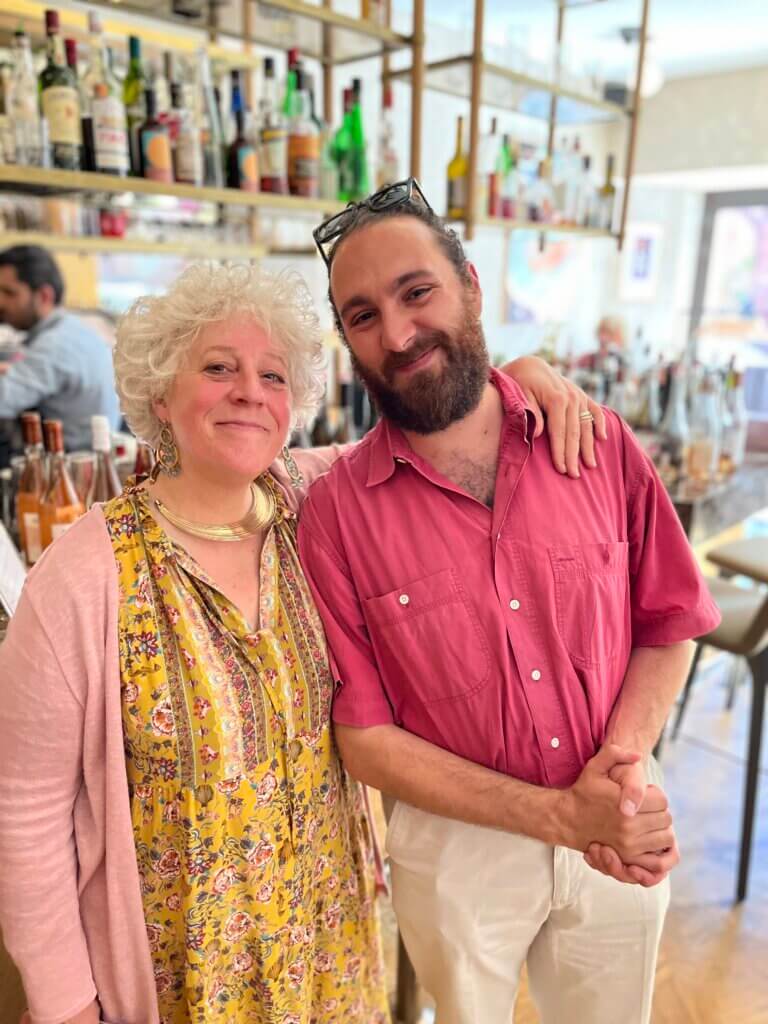
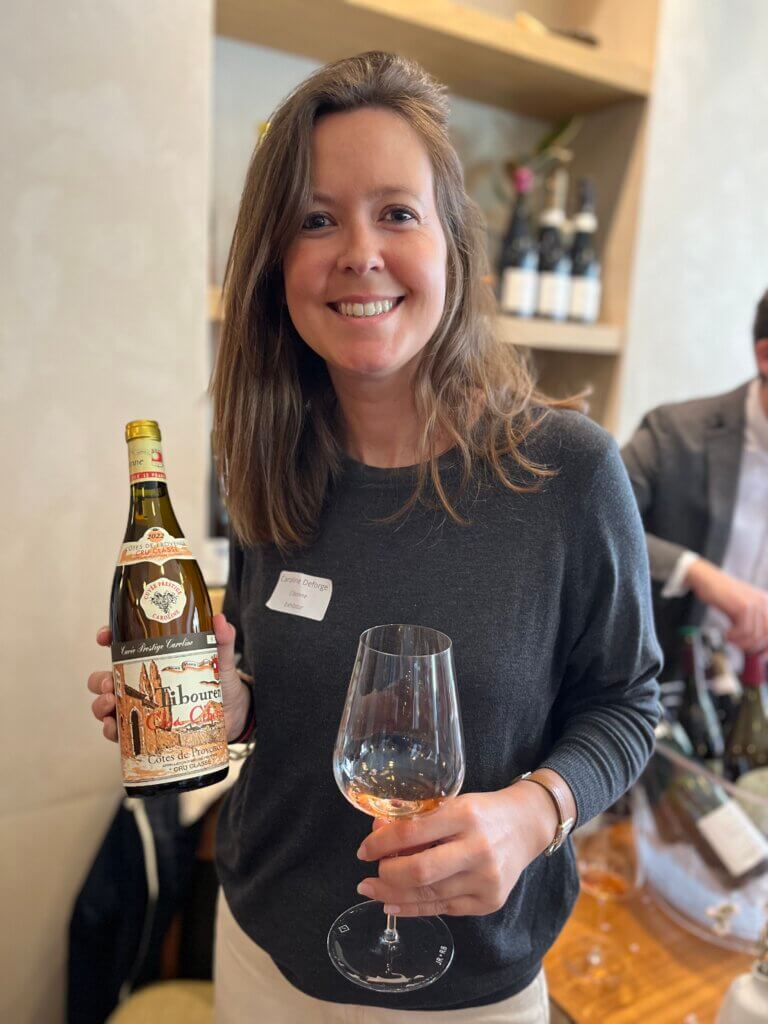
Links
- Here’s a link to the OIV 2023 Focus on Evolution of World Wine Production and Consumption by Colour PDF
- You can find our podcast on all major audio players: Apple Podcasts, Spotify, Google, Amazon and beyond. If you’re on a mobile, the button below will redirect you automatically to this episode on an audio platform on your device. (If you’re on a PC or desktop, it will just return you to this page – in which case, get your phone out! Or find one of the above platforms on your browser.)
Wines
The following are a selection of exciting rosé wines we’ve tasted lately.
Most were tasted by Peter at the Fine Rosé Day tasting, as referenced in the pod, on 19th June 2024.
- Clos Cibonne Cuvée Speciale des Vignettes 2022, Côtes de Provence (France)
- Clos Cibonne Cuvée Tradition 2022, Côtes de Provence (France)
- Clos Cibonne Château Cibon Cuvée Marius 2020, Côtes de Provence (France)
- Hacienda López de Haro Classica Gran Reserva Rosado 2012, Rioja (Spain)
- Magula-Gabay-Bernheim Sen 2020 (Slovakia)
- Château Pesquié Quintessence Rosé 2022, Ventoux (France)
- Champagne Alexandre Bonnet Rosé des Riceys 1985 (France)
- Famille Perrin Fleur de Miraval NV ER3, Champagne (France)
- Catena La Marchigiana Criolla Rose 2023, Mendoza (Argentina)
- Gérard Bertrand Clos du Temple 2022, Languedoc-Cabriéres (France)
- José Luis Ripa Sáenz de Navarrete RIPA Rosado 2019, Rioja (Spain)
- Domaine la Suffrène Sainte Catherine 2019, Bandol (France)
- Ampeleia Rosato di Ampeleia 2022, Tuscany (Italy)
- Maison Mirabeau La Réserve 2022, Côtes de Provence (France)
- Ktima Troupis Hoof & Lur 2023, Mantinea (Greece)
- Château Boucarut Qu’est-ce qu’on attend 2023, Tavel (France)
- All of Me 2022, Himalayas, Tibetan Area (China)
- Château Fabre Gasparets Les Armouries 2020, Languedoc (France)
- The Heretics Pale Rosé 2023, Essex (UK)
- Canned Wine Co Grenache Rosé No 3 2021 (France)
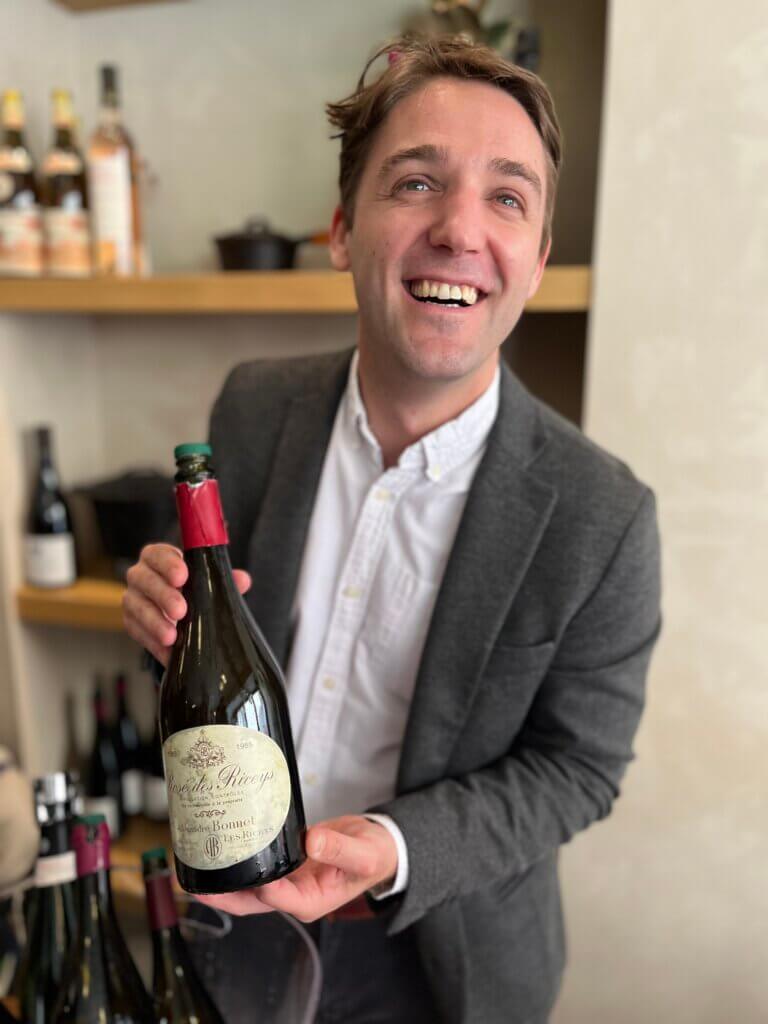
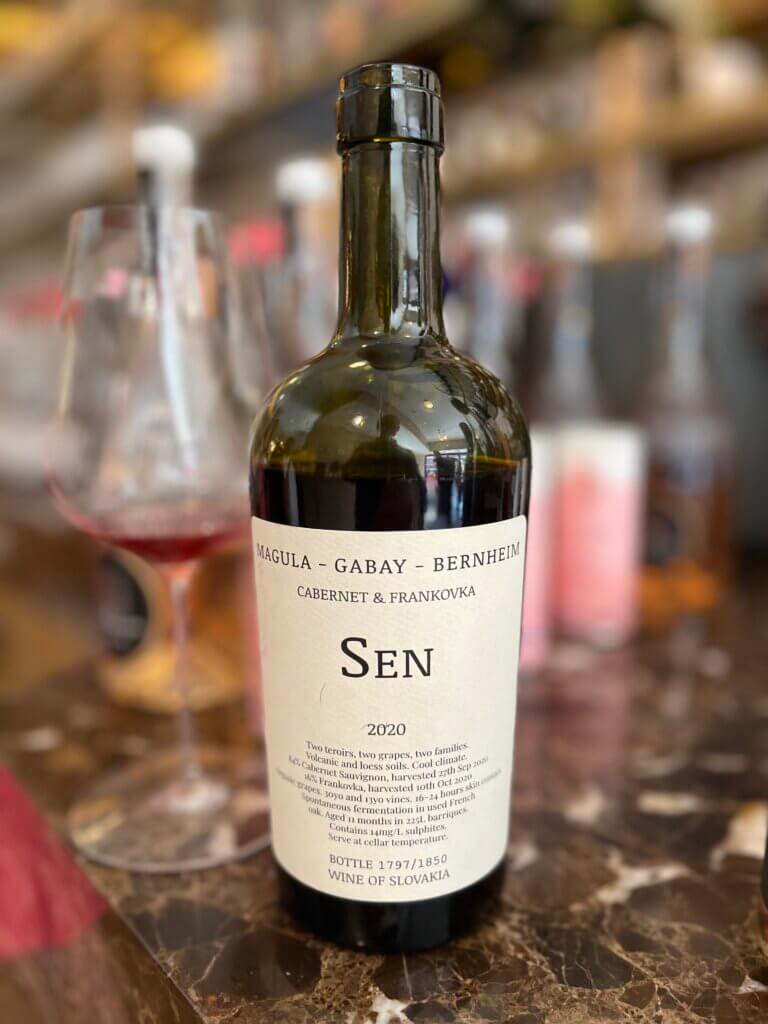
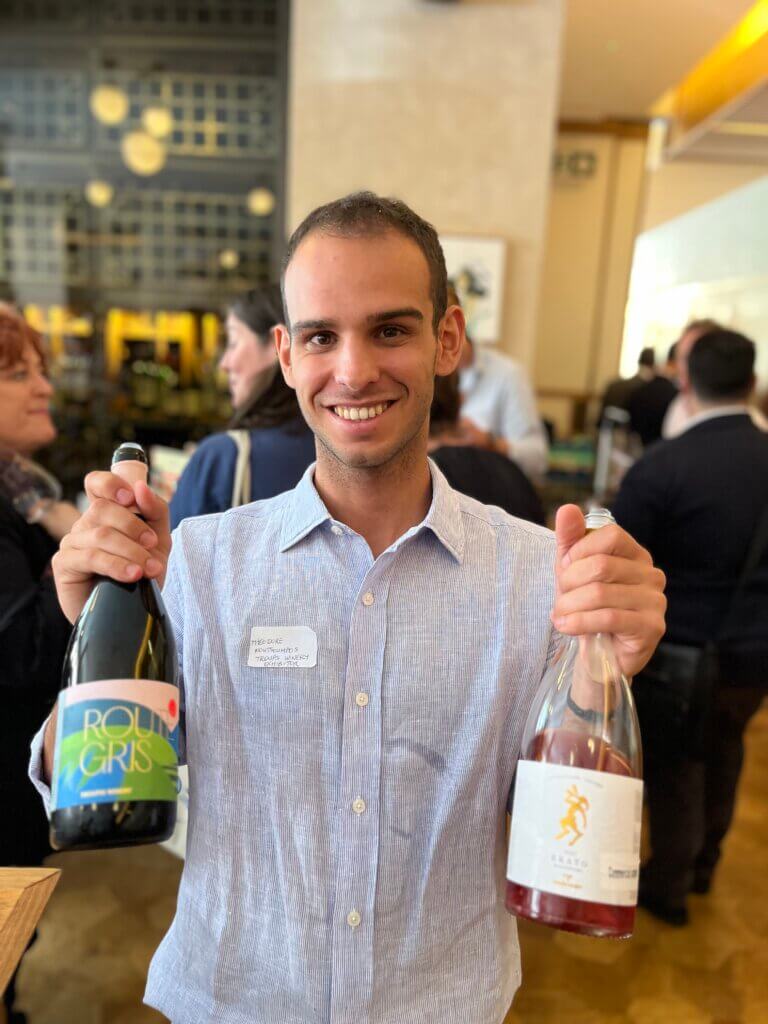
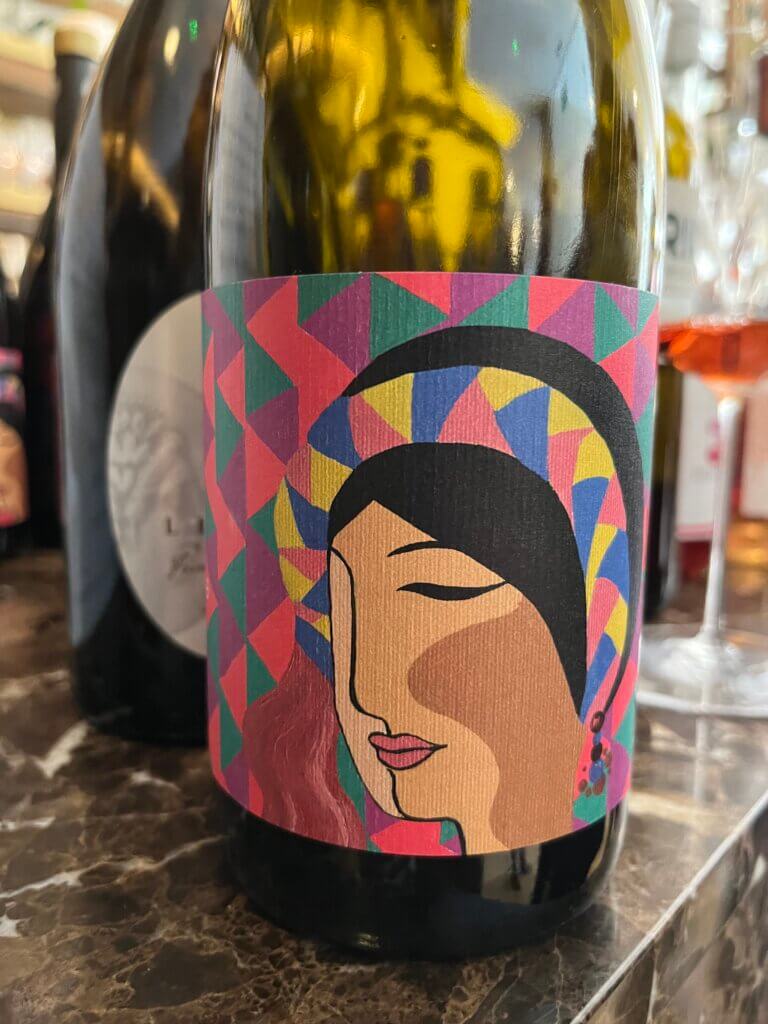
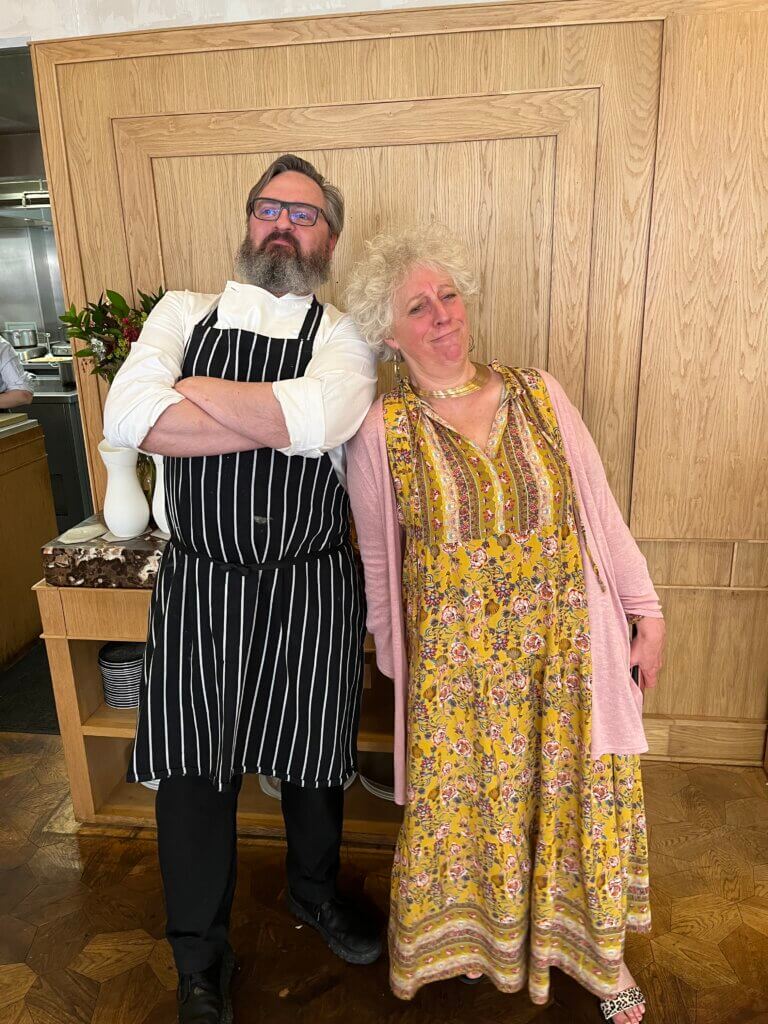
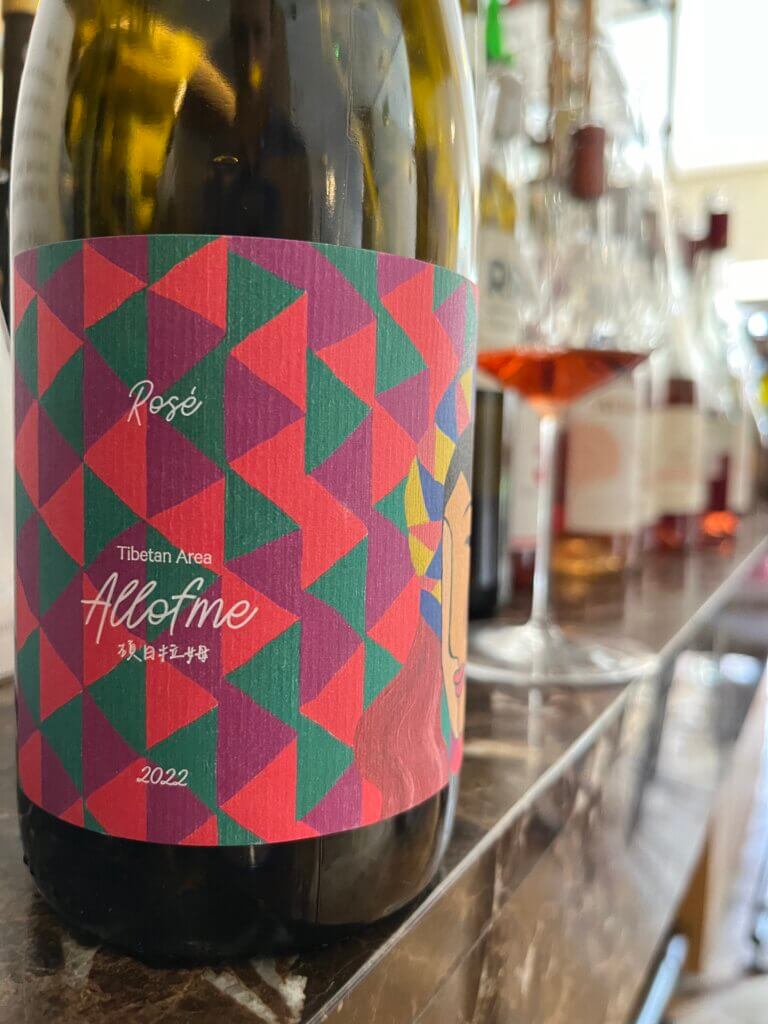
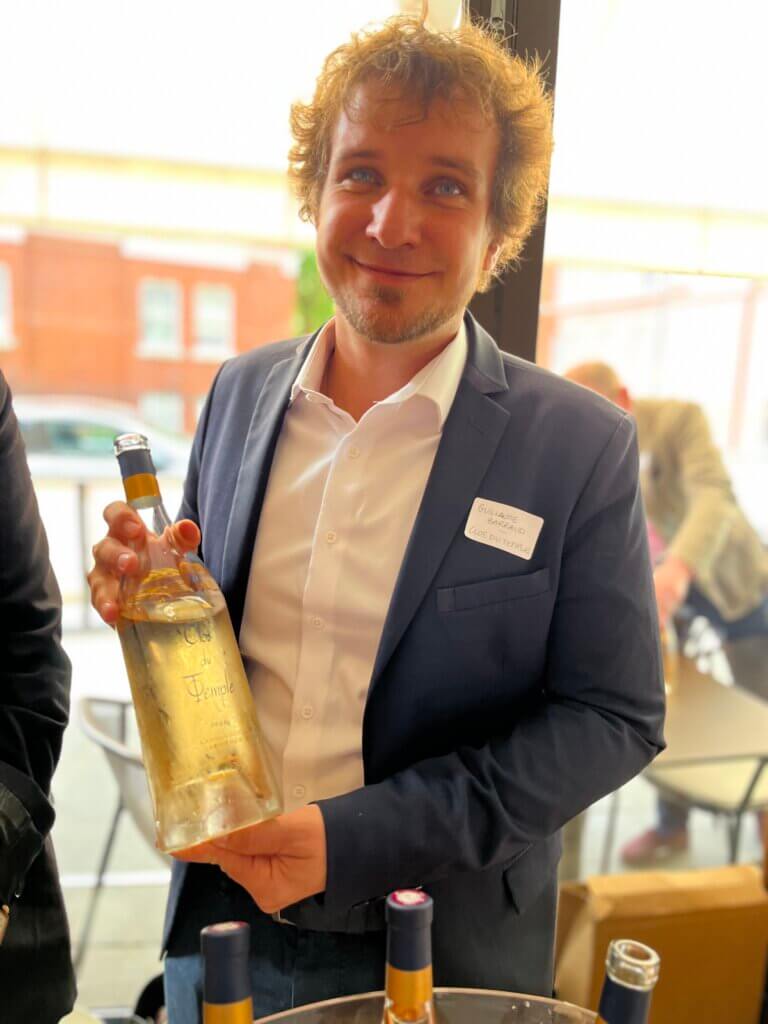
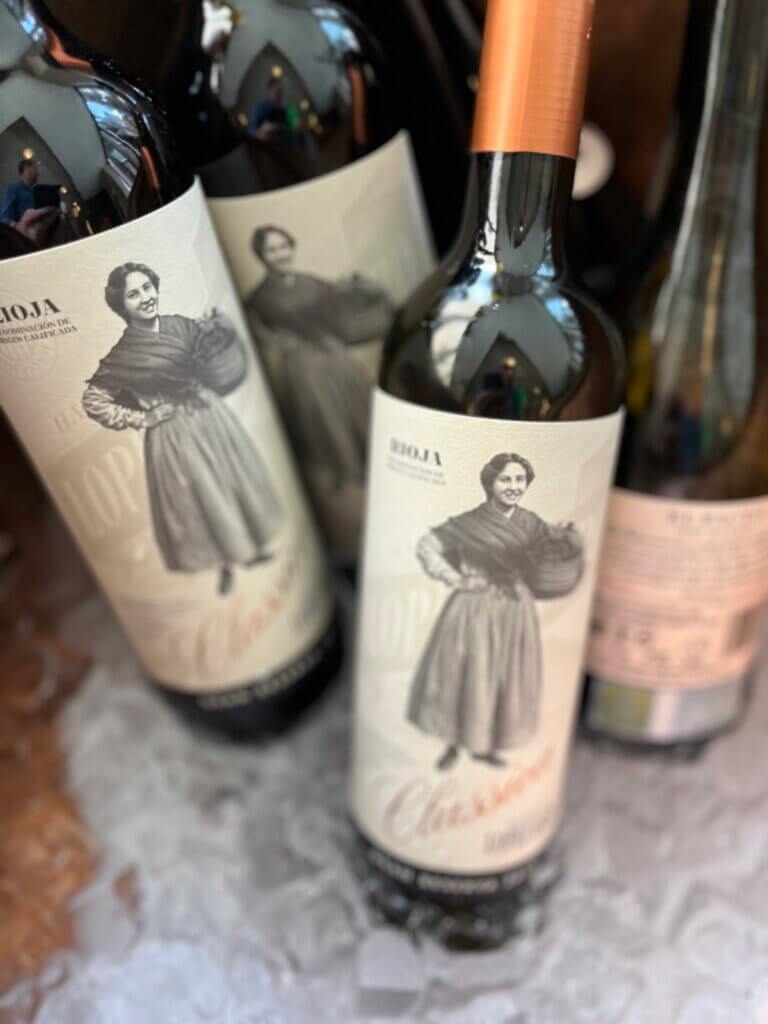
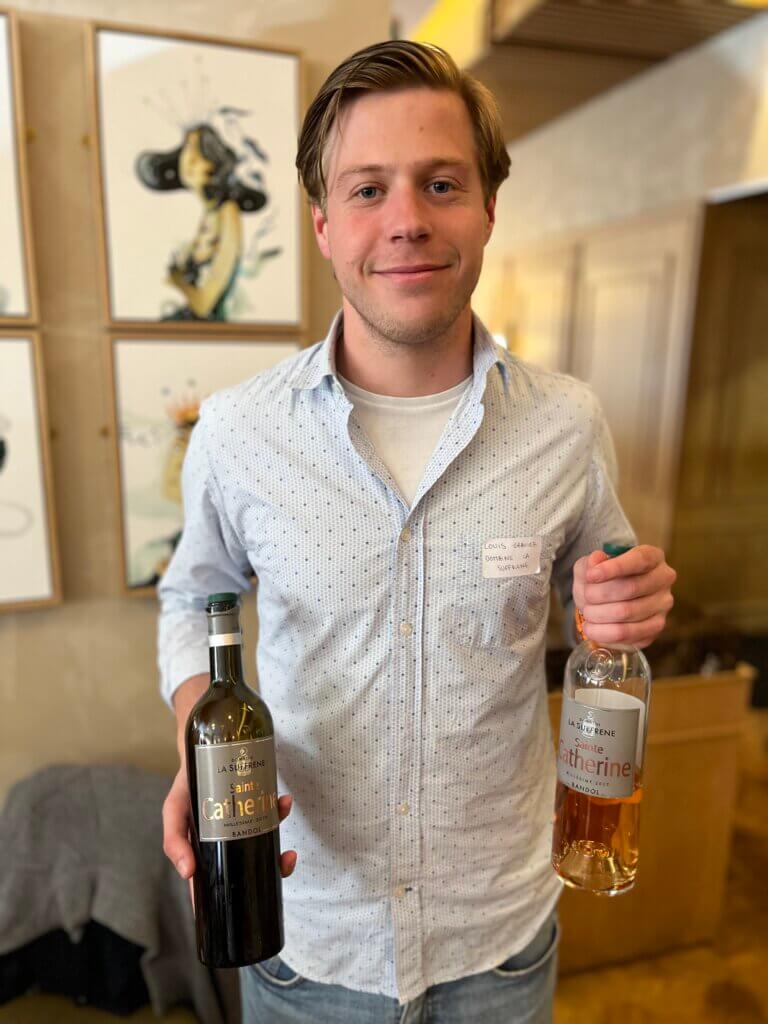
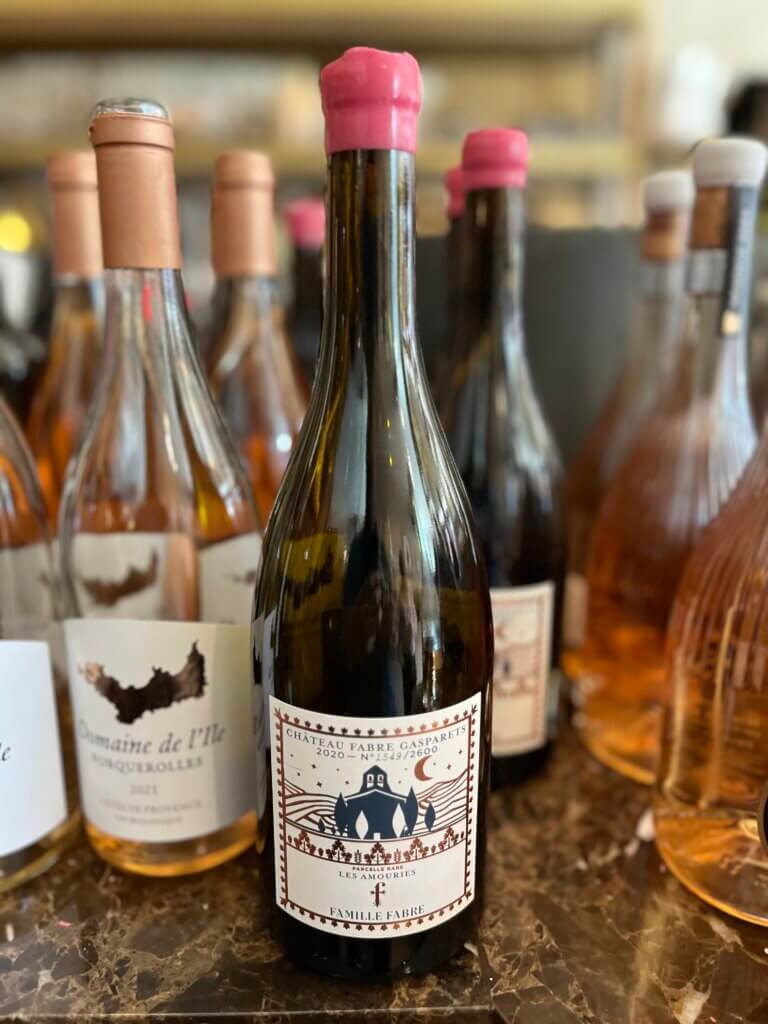
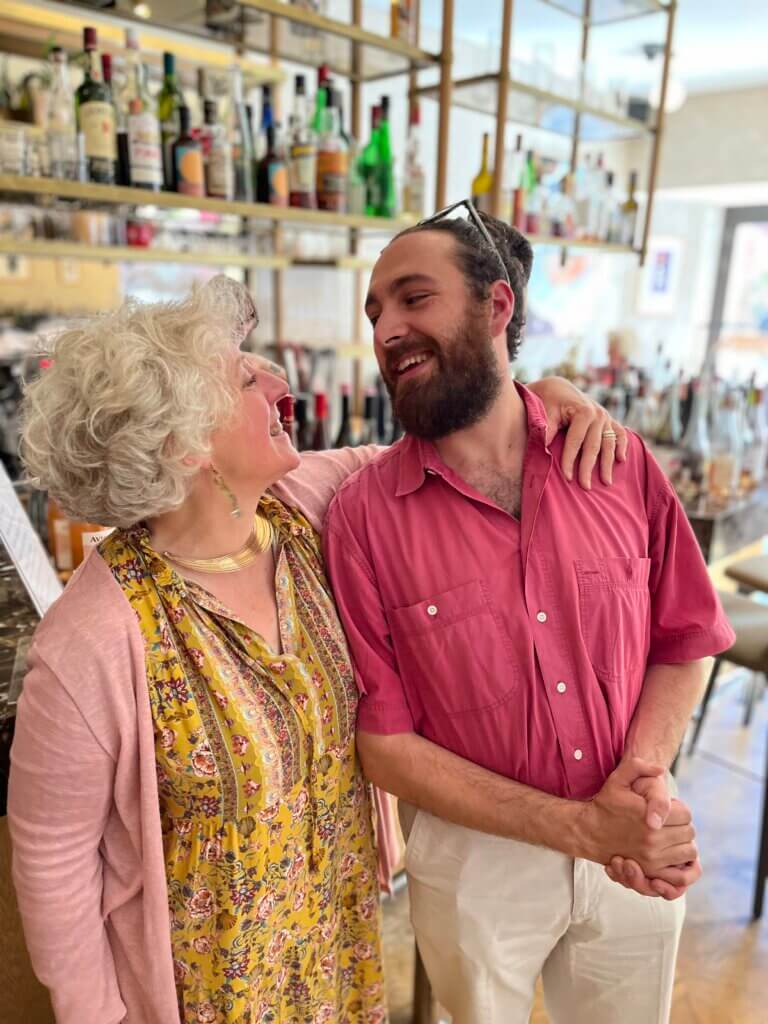
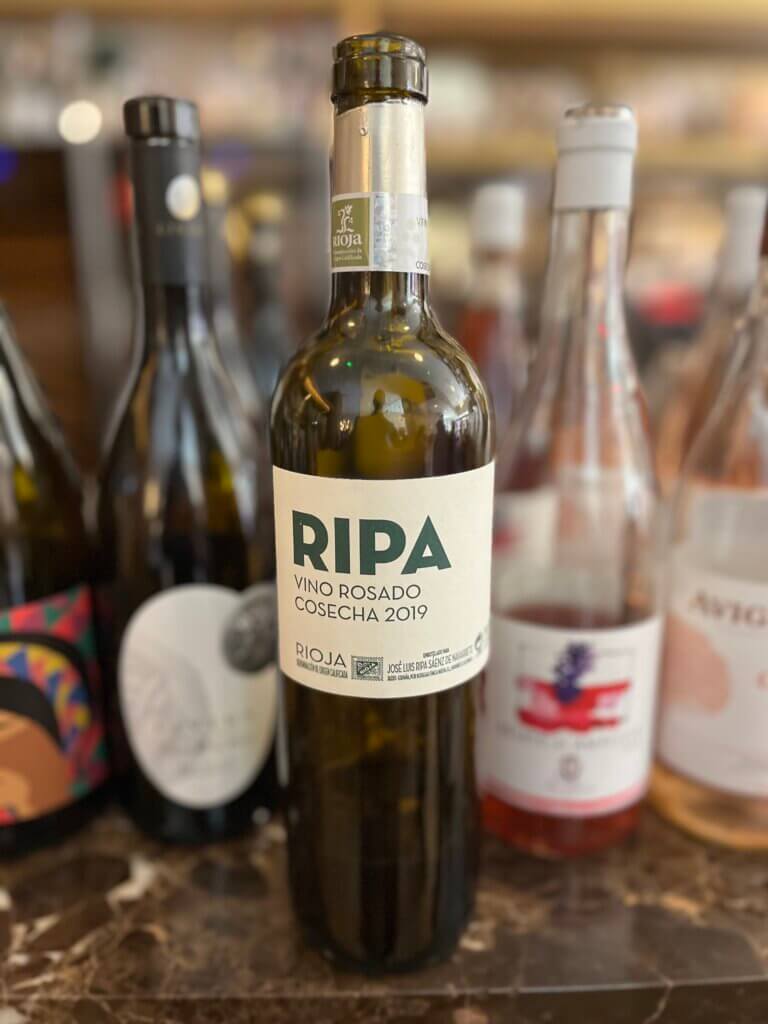
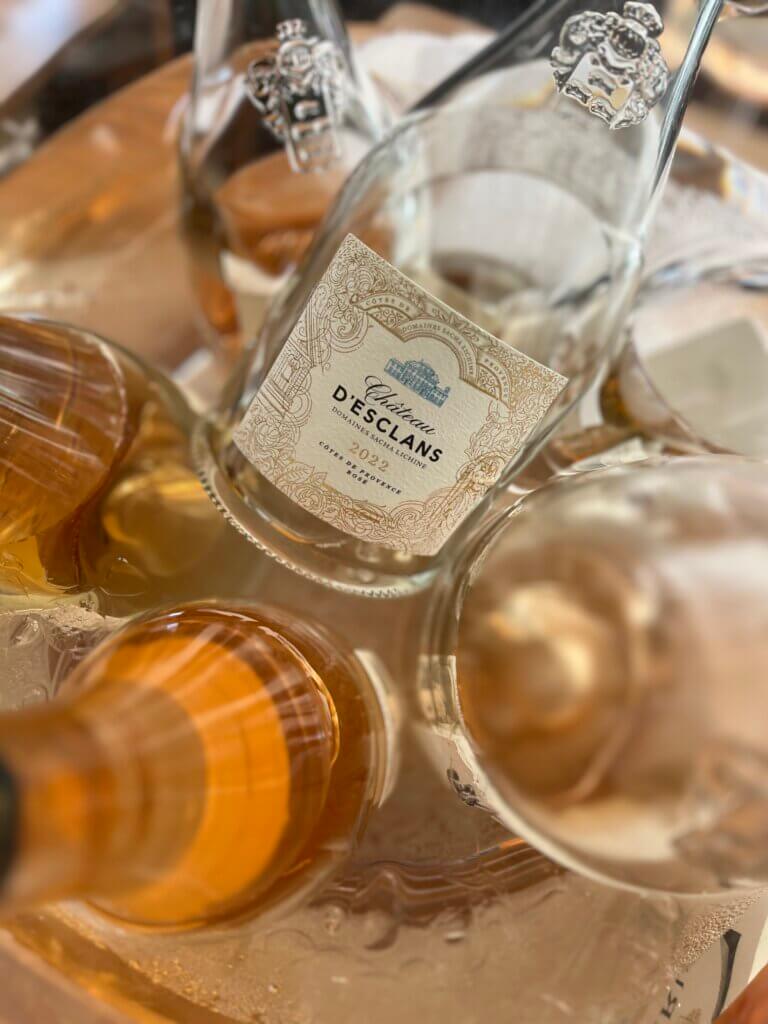
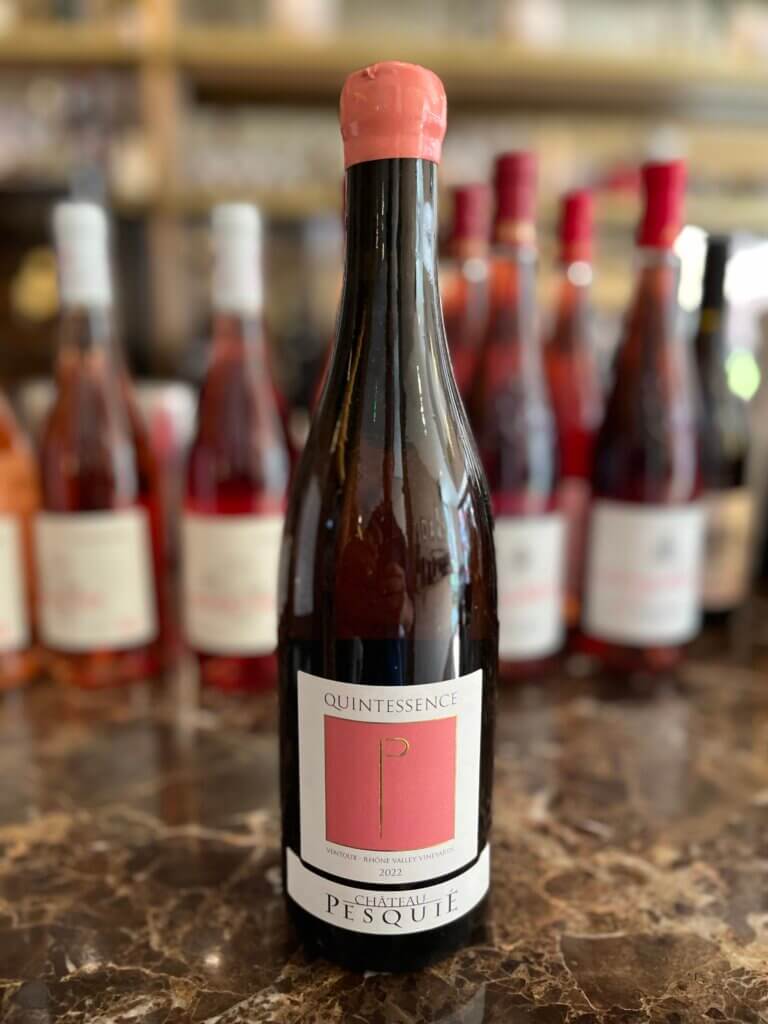
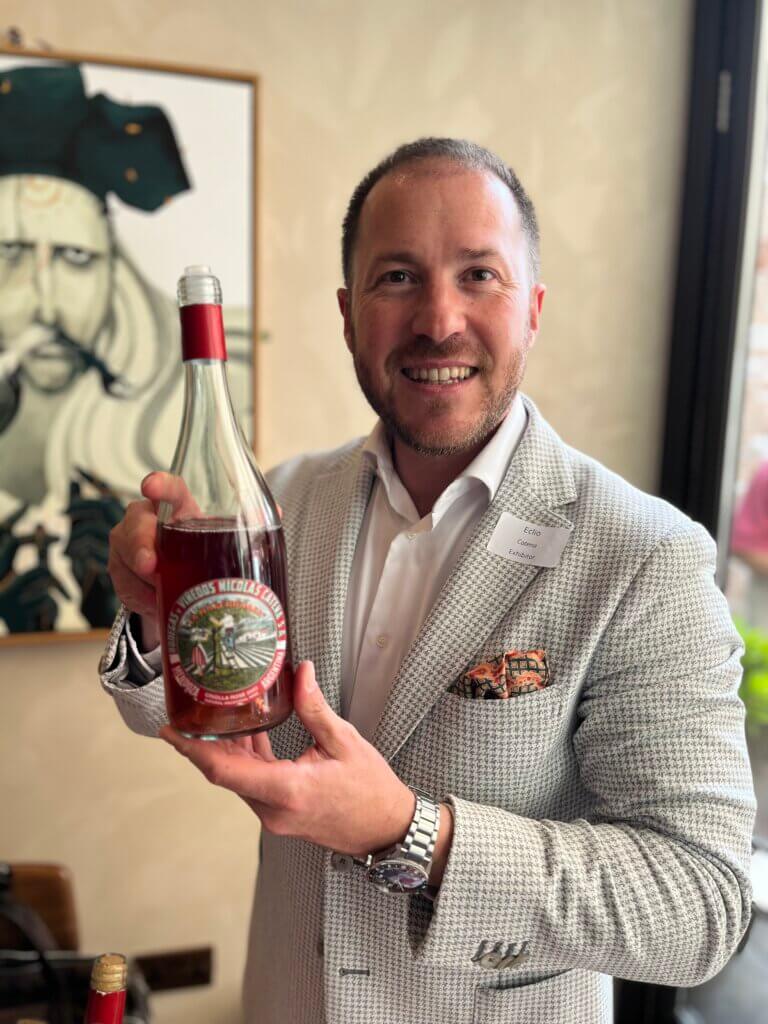
Get in Touch!
We love to hear from you.
You can send us an email. Or find us on social media (links on the footer below).
Or, better still, leave us a voice message via the magic of SpeakPipe:
Transcript
This transcript was AI generated. It’s not perfect.
Susie: Hello and welcome to Wine Blast, where we are talking rosé. But not in a trivial, flippant kind of way, which, to be fair, is often how rosé is treated. No, in this episode, we’re gonna bust some tired myths and urge you to completely rethink your rosé.
Peter: How’s that for intent? Yeah, no more cheap pink puns here. No, no, sir. Time to take rosé seriously. that doesn’t mean you can’t enjoy it or you have to stop splashing it all over your Instagram feed. Nor does it mean that rosé needs to stop being one of life’s great simple pleasures. it’s just that there is a rosé revolution going on and we don’t want you to miss out.
Susie: Here’s a taster of, what’s coming up.
Caroline Deforges: Open your mind. Taste. You will be surprised. And don’t look the colour, just taste. And you will see.
Elizabeth Gabay: I’m, not looking for perfection. Perfection is dull. I am looking for a wine that I will take a sip of and I’ll go, phew. That was interesting. That has stimulated my taste, my ideas, my curiosity stopped. Seeing it as rosé, see it as good wine
Peter: Caroline Deforges of world famous provencal rosé producer Clos Cibonne there, followed by rosé expert and fellow Master of wine Elizabeth Gabbay. both names we featured on the pod before. and we’re delighted to have them back on to bring this episode to life. we’ve also got some cracking rose recommendations for you. What a programme we’ve got coming up. where to start?
Susie: well, just before we do start in earnest, can we immodestly toot our own trumpet a bit? Because we wanted to just thank the judges and sponsors of the inaugural 67 Pall Mall award after we were named as finalists in the audio category for our wine blast episodes on light strike and orange wine We are absolutely chuffed and we feel very honoured, don’t we?
Peter: We absolutely are indeed. It was wonderful news, wasn’t it? Thank you to all day, including to 67 Pall Mall for this new initiative supporting wine communication around the world. congratulations also to our fellow nominees. do cheque out their outstanding work. Well worth the browse anyway.
Susie: That’s quite enough tooting, I think. back to the rosé and on with the show. Now, I know we want to get onto some myth busting and cardinal sins, which we think will be a fun way of going about this, but before we do, we should explain what we’re doing and why.
Peter: Well said. We do love a good explainer on this, don’t we? Yeah. Ah, okay. So, rosé is on a bit of a roll, and has been for a while now. According to a recent OIV report, rosé production grew 25% between 2001 and 2021. interestingly, red wine production actually fell by exactly the same amount over the same time frame. 25%. Coincidence? Almost certainly not to my mind, even though, as to be said, red wine is obviously a far bigger, total of production. But it does seem the world wants white and rose more than red these days. with rosé wine now accounting for more than 8% of global production, up from 6% two decades ago. Incidentally, three countries account for more than two thirds of production, and they are France, Spain and the US.
Susie: And another 2023 report, this time by data consultancy CGA, revealed that 21% of wine drinkers in the UK were consuming rosé more often than they were the year before. I think it does. anyway, also that 34% of UK consumers typically drink rosé in bars and restaurants. So it seems the trend is generally for more rose, and not just in the garden in the summer, but also in more mainstream and possibly fine wine environments, too.
Peter: That’s intriguing, isn’t it? And I think, anecdotally, it does just seem as if rosé is on trend right now, doesn’t it? It’s popular, it’s buzzy, it gets people excited, it gets people talking.
Susie: It does indeed. Maybe a bit like orange wine in that sense. And we’ll come back, won’t we, to orange wine in a bit, because it is relevant here. But one thing I did just want to highlight was that the OIV stats include sparkling wine So the figures for white and rosé wine include fizz. And, let’s face it, there’s not much red fizz, isn’t it?
Peter: Yeah.
Susie: But sparkling wine is another category that continues to perform well. And just one fact to mention here about Prosecco. rosé Prosecco wasn’t permitted under the appalachian rules, but a few years ago, they decided to allow it. And in that space of time, it’s gone from effectively zero to 75 million bottles sold every year.
Peter: 75 million bottles of rosé prosecco from nothing in a couple of years?
Susie: In a few years, yeah. Out of about. I think it’s about 650 million bottles of prosecco in total.
00:05:00
Susie: But that gives you an idea of the potential power and popularity of rosé. Using just one very specific example.
Peter: I mean, that’s amazing, isn’t it? So intense, come from nothing. Yeah. Wow.
Peter: yes. You cite it as an example of how rosé can do well, I suppose you know, you could throw in the wild success of what we might call premium rosé or, you know, or just posh rosé, you know, probably sounds better. Posh rosé. You know, they sort of super glam wines, you know, often with a pretty hefty price tag, usually, but not always from Provence or southern France with huge marketing budgets behind them and names like, you know, whispering angel, which everyone knows. Everybody knows Garras domain de Lille, Galupe. You know, they’ve definitely captured the zeitgeist, haven’t they?
Susie: Definitely, definitely. But at the same time, what we’ve noticed is that alongside all of this fun and games that’s been going on, there’s been a kind of alternative rosé scene developing, perhaps enabled by the broader popularity of the rosé category as a whole, but also set apart because the rules of their game are different. they want to smash through the traditional glass ceiling of rosé as a fun but forgettable summer coiffa. They want to make serious, complex, age worthy, characterful, ultimately potentially great rosé. And they want us to sit up and take notice of it.
Peter: Yeah, because it’s true, isn’t it, that rosé has, you know, I guess in modern times never been taken particularly seriously.
Susie: No.
Peter: actually, you know, it’s pretty patronising when you think about it, our attitudes to it sometimes. I read an article recently when, you know, a pretty respected wine writer was saying, effectively, rosé shouldn’t even bother trying to be a serious wine because we don’t want to have to think that much about it when we’re drinking it. You know, that’s like saying all white or red shouldn’t bother trying to be great because there are lots of cheap and cheerful whites and reds, you know. and it’s not only patronising, I think it’s doing wine lovers a disservice because it’s becoming pretty clear that rosé does indeed have the potential to be great.
Susie: So where’s the Romani conti of rosé? That’s the question. Anyway, before we get ahead of ourselves, I think we should start by shaking things up. You know, put the cat among the pigeons, as it were, by airing that short, quick fire question round you did with lees Gabbay.
Peter: Good idea, good idea. Okay, so, Liz Gabay is a well respected Master of wine and global rosé expert based in southern France. she works with her son, Ben Bernheim, and together they recently put on a fine rosé day, at the excellent Trivet restaurant in London. A, tasting, bringing top rosé wines and producers together from all over the world. this was one not to miss. I was powerless to resist, of course, and they absolutely. They absolutely smashed it. You know, I got to grab lees and Ben at the event, so there’s a bit of background noise in the interviews.
Susie: You had that much, rosé you were grabbing Liz did you?
Peter: Ah, I secured them for an interview, let’s put it that way. If you’re going to be predicting, we’re going to feature snippets of the interview throughout this episode. and this was just a brief, quick fire I did with Liz to get us warmed up. Can rosé be fine Wine?
Elizabeth Gabay: Yes.
Peter: rosé in magnums. Good or bad?
Elizabeth Gabay: Yes. Good.
Peter: rosé in cans, good or bad?
Elizabeth Gabay: Good.
Peter: Should we be ageing our roses?
Elizabeth Gabay: Yes.
Peter: Which ones?
Elizabeth Gabay: The wines that have been aged the most successfully. Slightly more maceration. I mean. Okay, what makes a wine age? Acidity. Sugar, tannins.
Peter: What are the things to avoid? Any. Any rosé cardinal sins in your book.
Elizabeth Gabay: I don’t like tutti frutti oil. Sweet type rosé. I’m not. I’m not a fruity sort of rosé. I do like a sort of a bit more structured, a bit more saline. Cardinal sins. Dreadful labels. Clear bottles. People saying, this is for summer. swimming pools. I don’t have a swimming pool. Yeah.
Peter: Yeah.
Elizabeth Gabay: I don’t want dull. Dullness. Don’t want dullness.
Susie: Life’s too short for boring wine I think we quite agree, don’t we? And indeed, too short for mincing words. So good to see lees not beating around the bush. Some pretty punchy views there.
Peter: Yeah, quite right. So, to tackle this big, amorphous topic that is rosé, we thought what would work best is to bust the myths one by one. Just go through a series of, I don’t know, outdated, misguided, unhelpful views regarding rosé and challenge or question them. to help us rethink rosé and appreciate it better, we’re even going to ask the most basic question of all. What even is rosé?
Susie: Okay, enough preamble. Let’s get going. Myth number one, rosé is for the indecisive.
Peter: Okay, seriously, this one is definitely tongue in chest. Just to start. On a lighter note, it’s a reference to the episode of rosé we did way back in series one all that time.
Susie: Again, that is a while ago.
Peter: I can’t remember what it’s called.
Susie: It was called the best rosé ever.
Peter: That’s right, yeah. The best rosé ever.
Susie: Snappy title.
Peter: Snappy never understated our titles,
00:10:00
Peter: but in that one, Lea Isaacs was hilarious in his heroic opposition to rosé, saying, not, only was it the drink of Satan, but it was essentially a wine for people who couldn’t make their mind up whether they wanted white or red.
Susie: That’s too funny. But to make a serious point, you know, rosé is doing well precisely because people are seeking it out as an active choice, rather than it being an alternative for the indecisive. Anyway, here’s what Ben Bernheim had to say.
Ben Bernheim: The most exciting thing about rosé today is that people want to drink it. it’s not a category of wine that we feel that we’re forcing on customers, on drinkers, on consumers. People are going out there drinking it, and it’s the wine trade that’s thinking, but why are they drinking this rubbish? It’s nothing like any other wine where it’s not that, not some producer made a wine and tried to sell it, it’s people are clamouring for it. And that’s what’s exciting about rosé, that it’s actually what people want.
Peter: People actually getting excited about wine Now, there’s a thing.
Susie: We never do that, do we? Never.
Peter: We do it all the time. That’s not the problem. Most people out there, you know, for whatever their wine you know, actually, when they get excited and they think, rosé, there’s a thing, we can get excited. That’s fantastic. Anyway, I’m going to come in here with big. A big myth. Myth number two. rosé is pink, or that rosé is rosé, or Rosie or whatever, or any colour at all.
Susie: I think we’re on colour, aren’t we?
Peter: Because the truth, when you actually think about it, is that rosé comes in a huge range of colours from something that looks like a white wine but with a very faint copper tinge, right through orange and gold and amber, to, pale pink, you know, bright pink, baby pink, salmon pink, disco pink. Could be one we could throw in there somewhere. Disco pink, I’ve definitely written that down sometimes. Ah. Pale ruby. And of course, right up to what you might consider a sort of pale red wine
Susie: So we shouldn’t belittle it by defining it simply as pink. We should think of it as a broad spectrum. That’s not a red nor a white, nor is it an orange wine It’s a bit ill defined, but in a way, all the better for it.
Peter: Exactly. And that’s kind of the point. We don’t want to define it, we don’t want to limit it too much. it’s a gloriously diverse section of the wine colour continuum. Think, of it as like drinking the sunset, which can be any colour, can’t it? Anyway, I put this issue to Liz Does colour matter when it comes to rosé?
Elizabeth Gabay: No, absolutely not. Well, no, it does, actually. It does matter, because when you have people who make roses with no colour, that matters. That’s a white wine But what I have noticed is that some producers are saying the market wants more white wine and so we’re getting paler and paler rosé. And then you ask that philosophical question, when is a blanc de noir become a white wine but also a grey number of roses that are almost a red wine but a light, fresh red Wine? Which is why I was saying earlier, forget categorization, because that’s just such a victorian concept that we put everything into a box. And that’s what I like about rosé, is there are no boxes. There should be no boxes. There are some producers who still work in boxes, but there are plenty of producers who are, for one reason or another, completely open to any other idea. I was talking to one of the producers earlier today and he said, I don’t. People don’t taste my wine when they buy it. They just look at the colour and they choose by the colour. And that that was from big buyers. It’s good wine That’s what I’m really looking for. And I think my main aim for today is stop seeing it as rosé, seeing it as good wine
Susie: So there’s another related myth to add in here. And that’s myth number three, that rosé has to be pale to be good. Nonsense. it’s a trend because provencal rosé is popular and that’s naturally quite pale. But pale rosé can be full flavoured. It can also be disgusting and deeply coloured rosé can be delightful and delicious and elegant. Do not judge a book by its cover.
Peter: Well said. and lees did actually make the point that, you know, a really pale colour in rosé can actually be related to things like high levels of sulphur or very particular use of cultured yeast, which can be the sign of a really quite boring, you know, one dimensional wine So, you know, that’s not good either.
Susie: No, no. And talking about colour, we absolutely have to touch on myth number four. rosé should come in a clear, colourless flint glass bottle. Oh, what do we think about that? Don’t like it. Now, this is a big one.
Peter: It’s a really big one. We railed against in our recent episode on light strike. If you haven’t listened to that one, press pause. Now drop everything, go and listen.
00:15:00
Peter: And prepare to be shocked by the scandal of how these clear, colourless glass bottles are damaging your wine and robbing you of your rightful drinking pleasure. It’s a massive issue, but particularly for rosé, because they virtually all come in these bottles these days and these bottles are ruining the wine
Susie: Yeah. And I mean, the wine trade would say, but people like to see the colour of before they buy it. But if we accept colour isn’t important, which it isn’t, then why do we have to put rosé in a bottle which can render it tasteless and lifeless extremely quickly when it’s exposed to light? You know, we can have a rosé section in a shop or a website. People get that. You know, we can use coloured labels or neck foils or wax, maybe to advertise the colour or the style.
Peter: Exactly. You know, and I think too often the defence is we do it because that’s the way it is and how it’s always been done and how everyone else does it. So we can’t change. It’s absolutely bonkers. You know, someone needs to take a lead on this. In fact, some people are, you know, and it’s great to see, but the minority, I just hope more people, retailers, producers, can follow suit and, the wine trade can just stop burying its head in the sand over this one, you know, enjoy the colour of the wine in your glass, not in the bottle.
Susie: Yeah. I mean, it’s sort of like Heinz saying, you know, we’re going to put all our tomato ketchup in clear bottles. There’s a good chance by the time it gets to you, it will taste significantly worse, but it looks cool and you can see that wonderful tomato colour when you buy it.
Peter: Yeah. Which is why, I guess, lees said yes to rosé in cans, you know?
Susie: Yeah, yeah.
Peter: She also mentioned that clear glass generally can contain less recycled content than dark glass, so it’s potentially worse for the planet, too. So I guess we’d urge, you to seek out and support rosé that’s not in clear colours, us glass bottles, because it will quite simply taste better. You get better value for money, plus it’s better for the planet. here’s what lees had to say.
Elizabeth Gabay: A lot of wine buying is guided from the top. Going to Waitrose. They’re recommending a brand, the magazines are recommending the same brand, and I think the media, the influencers, the buyers are very much to blame. So if we want the market to change, we need to have louder voices. so the two of us talked about dark bottles and light strike recently. you did the podcast. I’ve done articles and people are suddenly kind of going, oh, we’ve never thought of that. And you think so? So we really do need to be out there. And I think people, serious wine people, and I’m talking a lot about masters of wine as well, Master sommeliers. and everybody, we need to take action and we need to be less like sheep and we need to be far more provocative and challenging in what we’re suggesting.
Susie: So here we are being provocative. And there is much more of the same coming up as we tackle sweetness. Swimming pools, food, ageing rosé, provence, fine wine ice. And we even question the very definition of rosé itself. By way of quick recap, it’s time to get beyond the tired stereotypes and start thinking outside the box when it comes to rosé. Because that way, a world of pleasure lies. So bin the clear, colourless glass bottles, realise that colour doesn’t matter and understand that rosé is most certainly not just a, last resort for the indecisive.
Peter: Okay, so, we’re going to rattle through a couple of quick ones. Now, is that rosé is sweet? actually, it’s kind of a contradictory double myth, because while that myth definitely persists, there’s also a corresponding, perhaps related myth that rosé has to be dry to be good, maybe among different things.
Susie: So let’s take those sweet dry, one by one. Firstly, all rosé isn’t sweet any more than all white is sweet, just because some whites are. There’s a fair bit of rosé that is sweet. Ah, lots of, of blush styles or white zinfandel, for example. And a fair chunk of the overall volume of still rosé sold in the world is sweet. That is true. But equally, there’s a lot of rosé that is dry as a bone.
Peter: Yeah, but just because it’s a dry rosé doesn’t mean it’s a good rosé. there are some roses that are sweet, but which are really good quality. You know, lees mentioned a 1959 Cabernet d’Anjou rosé she had in our last episode. And best rosé ever, which was sensational. great Riesling or Chenin Blanc can be sweet and can be some of the finest white wine on the planet. And age worthy too, because sugar helps wines age. So, you know, there’s no reason that sweet rosé can’t be great too. so again, just want to be humble about important to take each wine on its merits.
Susie: Yeah, and I suppose you could add that rosé sparkling wine including rosé champagne, can often have some sugar added to it in the dosage. It will tend to be a very small amount and only to balance the wine rather than make it sweet.
00:20:00
Susie: And these can be some of the finest rosé wines on the planet, and they can age magnificently, magnificently as well.
Peter: Ok, so let’s shake things up again now, we’ve mentioned Provencal rosé a bit in this episode. The southern french region of Provence, which specialises in dry, pale rosé, which can make for great, easy drinking, food friendly wines. and we’ve already mentioned the posh Provencal rosé phenomenon. You know, pricey, glam southern french roses, which appeal to the jet set and have become really quite popular lately. So let’s call this myth number seven. Posh rosé, or even good, is all about Provence. I asked lees for her thoughts on posh rosé wines.
Elizabeth Gabay: Maybe that’s the rebel in me, sort of the communist hippie coming through from my, my earlier days. Are they the McDonald’s of rosé?!
Peter: Gourmet Burger kitchen?
Elizabeth Gabay: Well, exactly. But, you know, sort of. Should we be snobs, is the other question, personally, yes, I think we should be. I really kind of feel that by making wine or art or films mass media style or take away food, we have made it the right of everybody, and we’re losing that focus on a really good wine or a really good food or a really good film actually takes some creativity and some artwork, and we shouldn’t dumb down everything. And that’s. That maybe is a big problem with wine dumbing down everything.
Susie: You need creativity and artistry to make good rosé. I love that. I suppose there’s a place for everyday, consistent styles of rosé, but equally, we don’t have to then believe that that’s where good rosé begins and ends. But on that note, I’d kind of challenge your myth by citing another myth, that provencal rosé is all the same.
Peter: Yeah. No, no, you’re quite right to challenge that. I put my hands up to massively oversimplifying and stereotyping. And my apologies, to all those provencal winemakers crafting characterful rosé wines.
Susie: What can I say now, lees? Well, whatever you can say. Liz had something to say about this, didn’t she?
Elizabeth Gabay: So what’s interesting is, a vineyard like Clos Cibonne who for years have made large oak barrelled with flor, and a lot of people go, but that isn’t Provence rosé. And I go, yes, it is.
Susie: So this is a really valid point. There are some brilliant rosé wines made in Provence and the south of France more broadly. And Clos Cibonne is a great example. It was one of the most popular and cited roses in the Twitter survey we did a few years back for our previous rose episode by wine luminaries like Randall Graham in the US. Now, they’re based between Marseilles and Saintrape. It’s a family run enterprise. They use an intriguing grape variety. Tibouren. Tibouren. Is that how we say it? Tibouren. Tibouren. And things like old oak and even flor in some of their cuvets to make really characterful, elegant, age worthy roses. And do you know what else they use?
Peter: It’s all coming out now.
Susie: Dark bottles.
Peter: Yes. Come on.
Susie: Which shows you they take the quality of their wine seriously. Anyway, so you talked to Caroline Deforges at the fine rosé day. She’s the fifth generation and here’s what she had to say.
Caroline Deforges: So it’s a very beautiful story. We are planted at 90% of particular grapes. The name is Tibouren. So Tibouren is, it’s very particular. It comes from Mesopotamia, arriving in Greece and also in Italy, in ligur, you can find the cuisine of the Tibouren. It’s the roseset. And today the Tibouren is only 2% of the plantation in Provence. And us, we are planted, as I told you, at 90% of Tibouren. So maybe we can say that Clos Sibon is the house of the Tibouren. Today we produce, 80% of, rosé, and the blend of the rosé, it’s 90% of Tibouren and 10% of grenache.
Peter: So you are all about rosé, really. You make a little bit of other things, but rosé is your main thing. You make it with this fantastic variety that’s not very well known. Tiburois, tell us about, you know, your style. What are you doing with your rosé to make it different and unique?
Caroline Deforges: Yeah, it’s a very fun story because when my parents decided to take the vineyard of my grandparents, my dad arriving with his very strange bottle because as you know, Tibouren, crossibon, it’s, very different than the other, domain in Provence. because us, our label is very rich, very rustic, very old. We have a green bottle and the wine is very coloured. and when he came back at the vineyard 20 years ago, everyone said to my dad, dad, I’m sorry, but we can’t do anything for you. You know, rosé, it’s very clear, it’s very shay, it’s very beautiful. It’s, elegant.
00:25:00
Caroline Deforges: But you with your bottle and your wine style, it’s not possible. But he decided to continue because he was in love with these grapes, the Tibouren. So the style of the Tibouren is something different. it’s quite, very spicy. you have some paper, white paper, black pepper. You can have also, some fruits. It’s very fruity, very fresh. we are not too far from the sea, the mediterranean sea. So we have a very influence of the, of the sea with a very, salty tasting. Also at the end. And the Clos Cibonne Iban rosé are rosé from terroir and also rosé of, age. We can keep it from 30, 35 years old easier. We open a vignette from 1980, 1988, in one Paris. And it was, very good. The particularity of the rosé, it’s because we make some age, in old hock. It’s, all fodder from. From our grandfather of 100 years old. They are from 1903. And the wine stay during one year inside this hog. That’s why the Tibouren is so particular, because of the grapes, because of the generation knowledge, and also because of the hock.
Peter: We should mention that vignette is the name of one of their wines. Ah. And that foudres or fuder are, big oak vats used for making and storing wine but not often rose. Interestingly, anyway, quite a bit in there, some of which we’ll come on to. but it’s fair to say, in the meantime, that Clos Cibonne doesn’t make your archetypal provencal rosé, you know, that’s absolutely true. These are wines with real character. They’re sort of unique in style. Well worth trying.
Susie: Yeah, and we’ll recommend a couple, in due course, won’t we? But Caroline did touch on a few myths we wanted to bust prime among them. This notion, which I mentioned in the intro, that rosé can’t be fine wine That rosé is simple and fun and lighthearted, and we should pat it on the head and drink it by the bucket load and not expect anything great or exceptional for it.
Peter: So this is a classic case of a self fulfilling prophecy in my book. We haven’t expected that much of rosé, so it hasn’t delivered much, you know, at least on a, on a. On a large scale. You might typically judge a fine wine category by or maybe perhaps just in received opinion. but we’ve had Caroline there, explaining that hers is a terroir driven, age worthy, characterful rose. All of which I totally agree with. this is what lees Gabbay had to say.
Elizabeth Gabay: I’ve often said to people what I’m looking for, I’m not looking for perfection. Perfection is dull. Who wants perfection? I am looking for a wine that I will take a sip of and I’ll go, whoop. That was interesting. That has stimulated my taste, my ideas, my curiosity. And for me, rosé still has that because it’s still quite a young category. Whereas red, red wine you know, there’s nothing more boring for many of us. Seen lists of on premeur Bordeaux. Most of us don’t live that life. Most of us want a bottle of wine for Friday night, Saturday night that we’ve enjoyed. And I would still drink red, I will still drink white. I love good champagne and I want rosé to be able to achieve that. I want more people to recognise that there is rosé that can achieve that.
Peter: I also put it to, Caroline that many people say rosé can’t be fine wine And by the way, pedagogie in French means education in English.
Caroline Deforges: It’s funny because, one month ago, I went to a gastronomic restaurant in Paris. one of our customers and I saw the menu of, wine and I didn’t saw the section. But where is my, vignette? I say, oh, sorry, I put you in the white section because, it’s too hard for us to, in the gastronomic restaurant to sell the rosé. So I say yes, but if you don’t do the job, nobody can do the job. So I think we need to make some pedagogy because it’s not because it’s a rosé, because rosé, it’s a real wine And you need to make some pedagogy to explain that, it’s the world of the sommelier, that it could be also a wine And our wine if you Clos Cibonne your eyes and if you have a black, white, black glass, you can imagine that it’s, finally a white wine So that’s fun that it’s a rose, but it could be something different too.
Peter: It could be a very fine white wine in another world.
Susie: I’m not sure if we can make this a proper myth, but some people do seem to believe that rosé is just a vaguely alcoholic, brightly coloured drink to be consumed poolside in the summer, possibly which tastes better if you’re wearing a bikini.
Peter: Yep, definitely.
Susie: I’m gonna go with that myth. I’m gonna go with it. Anyway, this is what Caroline said.
Caroline Deforges: I think, rosé in the mind of people, it’s a, holiday. It’s holiday, it’s summer, it’s beach, it’s a swimming pool. But, yes, more and more you can find it in a gastronomic place. you know, at sketch, we have, one of our rosé. It’s a three
00:30:00
Caroline Deforges: Michelin restaurant in London so we are happy to see that, finally mines said could change about the colour of the wine
Peter: Here’s what Liz had to say. And what would you say to people who say rosé is just for summer drinking?
Elizabeth Gabay: What sad people.
Peter: I think the point she’s making is that rosé is for year round drinking.
Susie: Not just for summer, like puppies and Christmas.
Peter: Yep, almost exactly. they’re drinking puppies. Yeah. That’s not.
Susie: No, no, don’t go there, don’t go there.
Peter: Let’s not go there. Carolyn did touch on another myth there, ah, to move on. that rosé is not a food wine you know that it’s just for garden coughing and not for a serious meal at the table. But actually, we’ve already seen from the market data that this attitude is changing. And as Caroline says, top restaurants are putting serious roses on not just to cover all style bases but, you know, also to recognise their ability to pair well with top quality food.
Susie: Here’s what Caroline suggested by way of food match for her.
Caroline Deforges: The best match with, our rosé, maybe for the cuvette vignette. it’s the bouillabaisse, traditional provencal dish. We, can also have a rouger, a very strong fish with some olive oil and some tomato. It’s perfect too. But we recommend also with all the food like indian food or asean food, currilembe, moroccan food too. It’s very perfect because it’s spicy as a tiburi. So it’s a very good match and.
Susie: We can attest to how well Clos Cibonne’s wines go with all kinds of food. Rosie is really underappreciated in this sense. a good rosé can actually be far more versatile with food than white or red. You know, accommodating different flavours but working with lots of different things as well. and don’t get me started on rosé champagne and sushi.
Peter: I know where that road leads. It’s terrifying. but one other thing Caroline touched on was, this concept of, of ageing rosé. So this is our, ah, 11th. 12th myth.
Susie: Not sure. 12th. Call it twelve. Call it twelve.
Peter: It’s a nice round number. that rosé isn’t age worthy because good rosé absolutely can and does age. You know, as Caroline said, they age their wines 30 plus years. we’ve got a nearly 40 year old recommendation coming up in a moment and lees has a seller full of old rosé. She loves showing guests. she’s invited us, I seem to remember.
Susie: I think she definitely needs to go. We need to go.
Peter: Anyway, here are a few words from her.
Elizabeth Gabay: what are you looking for in a rose? What I’m looking for is the same as I look in a red and a white wine I’m looking for balance. I’m looking for complexity. I’m looking for ageability.
Susie: Just like great white or red, there’s no reason good rosé can’t age, you know? Quite right. Okay, so a few last myths to bust. Firstly, that rosé needs to be served ice cold, or perhaps even worse, with ice cubes in it.
Peter: Yeah, we’ve touched on this before, but we do tend to serve our, whites and roses too cold. You know, good white or roses should be served at eight to twelve, eight to 14 degrees centigrade. And our fridges are, what, four degrees centigrade? So, we have our 2020 rule. that is to take whites and roses out of the fridge 20 minutes before you serve them. And, the final bit of this rule is to put reds into the fridge for 20 minutes before you serve them, because we tend to serve them too warm. But that’s not really our focus here.
Susie: Now, as for ice, that will chill any character right out of the wine and it’ll dilute it, too. So if you really want to go for it, go for it. But if you’ve got a nice rose, don’t serve it bone numbingly cold, or you won’t be able to taste it properly. And if you really, really want, must put something in it, you know, freeze some grapes and use those. At least they won’t dilute the wine will they?
Peter: Okay, here’s a myth for the winemaking geeks, or perhaps the winemakers out there. I don’t know. that rosé needs to be made quick, clean, and consistent. you know, made in stainless steel vats with cultured yeast, in virtually sterile, lab like conditions and bottled and released early. yes, that can make for simple, consistent, predictable rosé, but also often quite boring rosé you get tired of easily. we want a bit more character from our rosé. Things like Caroline’s old oak foudre, maybe a bit of flor, whatever. Just make it a more interesting wine please.
Susie: Life’s too short for dull wine Okay, so by my count, we’re at our, 15th myth, and that is that rosé is stuck in the mud. It’s not evolving or interesting as a category. You asked, ah, lees Gabbay, whether rosé was finally coming of age.
Elizabeth Gabay: Yes, I think it is. I think, climate change and also economic pressure. Realise they can sell rosé, they can have a rosé entry level wine which they can sell, and that will help finance everything else. They are also finding that gastronomically rosé is helping. It’s coming of age. It’s coming of age very slowly. We’re not getting boom. It is.
00:35:00
Elizabeth Gabay: There are some. There are quite a few wines that we’ve tasted where we have thought, this is radically different, this is going to change the world. And we’re still waiting. You know, it’s like the tsunami is not happening. It’s a ripple effect. It’s sort of.
Peter: So the evolution is happening, but it’s happening slowly, incredibly slowly.
Elizabeth Gabay: We’re hoping to speed it up. That is our main ambition. just because we’re impatient. And I kind of feel until we can speed it up, we can’t get to the next level.
Peter: Next level. rosé. the romani conti of rosé, here we come. but very slowly, apparently. okay, so my last myth is a slightly tongue in cheek one, like our first one. and that is the myth that real men don’t drink rosé. Now, we’re not talking about my masculinity here, just to be clear.
Susie: I wouldn’t dream of questioning that, would we?
Peter: No, for understandable reasons, but no, it’s clear that real men embrace rosé for the delicious drink that it is. they don’t want to miss out because of some utterly misguided notion that rosé is somehow a girly drink. And this phenomenon does have a name, which is brose, which is whereby men embrace rosé. And it’s something I heartily endorse, for the record.
Susie: Yeah. Joking aside, though, there is demographic data showing evidence of this trend. So it is a real thing, even if I’m not totally convinced by the term brose. but to move on, my final myth is where we get a bit meta, maybe zoom out a bit for the bigger picture. But it’s the following, that rosé is a clearly defined thing, because there is no legal definition of what rosé is. No legal parameters, at least at an international level.
Peter: Yeah, I think the OIV has said as much. And it’s an interesting thought, isn’t it? I guess it. It ties back into what we were saying about rosé being a spectrum rather than a single colour, covering lots of different styles and hues. And of course, there are different ways to make it, aren’t there? From just quickly pressing red wine grapes to get a touch of colour, to bleeding Djuce off during the early stages of red wine making, even adding a little red wine into white, which is often what happens with rosé champagne, for example.
Susie: So perhaps we, perhaps we should go back to the wise words of Caroline closely bonne. When you asked her what one message she wanted to give our listeners about rosé wine
Caroline Deforges: Open your mind. Tastes. You will be surprised. And don’t look the colour, just taste. And you will see.
Peter: Open your mind and you will see. wise words, if ever there were some rosé, can free your mind if you let it. which is why we need to rethink our rosé.
Susie: Right. I think that’s quite enough off myth busting. I think we did a good 17 there, which isn’t bad. But now it’s time to recommend a few wines before we call it quits and sink into a glass ourselves. And you tasted quite a few wines at the fine rosé day you wanted to mention, didn’t you?
Peter: Yeah. Okay, so I tried some really posh stuff, and some really quirky, intriguing stuff too, including things like wines from rosé from Gris, Slovakia, Rioja, Israel, Austria, Argentina, Tuscany, even Tibet.
Susie: Tibet.
Peter: It was a fascinating tasting. Ah, and I’ll put a full list of recommendations up on the show notes on our website.
Susie: But if you were to pick out a few by way of brief highlight.
Peter: Okay, well, you know, talking of characterful rosé, good Rioja Rosado is a wonderful thing, you know, especially older stuff like Tondonia, we’re all familiar with. And, the one that was there was the atienda Lopez de aro Rioja classica Gran reserva Rosado 2012. It was wonderfully complex and evocative and serious, you know, at twelve years old, a real treat. also the famille parat fleur de Miraval. Miraval, a well known rosé name. This one’s from champagne. It’s their, er, three champagne that was also delicious, you know, as good rosé champagne can be.
Susie: Didn’t you taste some properly old stuff?
Peter: Oh, yeah, absolutely. So. Ah, the champagne. Alexandre Bonet, rosé de Rise, 1985. it was pretty stunning too. this is pure pinot noir, one of the oldest rosé appellations in the world. It’s a still wine even though it’s from the champagne region. It tasted of leather and truffle and dried fruit with a wonderfully complex and resonant palette profile. It’s, it’s great wine that just happens to be a deep rose, you know. they also had a 2005 there that was really impressive too.
Susie: So what about the south of France? This, this hot spot for posh rosé.
Peter: Posh rosé. So there are definitely a couple of wines that highlighted that category. Gerard Bertrand’s Clos du temple is definitely posh. it’s also pretty delicious. Both the 2021 and 2022 vintages were seriously sort of complex. I also did like the demaine la soufraine cuve St Catarin from Bondole. It’s a really sort of deep hue, gutsy wine with lots to say for itself. and some
00:40:00
Peter: nice dark bottles, too.
Susie: Jolly good. And which wines were tasting well from our, beloved Clos Cibonne
Peter: Okay, so, yeah, the traditions 2022 was beautifully poised. A very rewarding kind of. Kind of rosé there. Cuve Caroline 2022 is oaky, but really well managed, very well integrated and sort of saline on the filler. So very foodie. Then, the vignette, which we mentioned a couple of times, in the pod, which currently mentioned too, is the one aged underfloor, is just yeasty and complex and gorgeous, I think. Possibly my favourite of their lineup, I think. And finally then, the chateau Sibon 2020, Cuve Marius was very long and serious stuff.
Susie: Okay, so finally you mentioned some quirky stuff. Ah, what about that?
Peter: We do love a bit of quirk, don’t we? so Catena, from Argentina. Catena’s lambda machiana criolla rosé 2023 is made without sulphur in amphora, while fermented. It’s a bit mad and oxidative, but it’s also fun and succulent. More like a light red than a rosé, but very cool, very moorish. there was some cool greek wines from ktima trupis, made from the Mosco filero grape, which is usually a white, but it has darkish skins, a bit like pinot gris. So it can make rose their hoof and lure. I 2023 was very perfumed, exotic and sort of crunchy.
Susie: Didn’t Liz have her own wine there, too?
Peter: Yeah, we’re just coming on to that, actually. This is the sen s e n, 2020. It’s made by lees, with Ben and slovakian winemaker Vladimir Magula. it’s made from cabernet and blaufrankish, all organic, 24 hours maceration, spontaneous, firmin and barrel aged for a year. It’s mad as a hatter, as a wine It’s funky and hazy and a bit cidery. It’s also really characterful and grippy and sort of textured and wild. It’s gorgeous, for those that like that kind of thing, I guess.
Susie: Yeah. I mean, yeah. yeah. Okay, so I think after all that, I’m due, I’m not due a cheeky rosé recommendation as well. Well, I just. I’m just going to pick one. One of the many exciting roses that we’ve tried recently and it is the heretics pale rosé, 2023. It’s a brand new release barrel fermented pinot noir rosé grown in Essex and it’s just delicious. You know, you’ve got aromas of sour cherry and red plum and there’s just a tiny hint of sort of spiced nut from the oak. And then in terms of taste, it’s dry, it’s elegant. And what I really like about it is the way it manages to be quite characterful. Not, not quite on Liz’s level, but it is characterful. It’s a bit yeasty, but not crazily so. So I think it would appeal to a broad range of tastes.
Peter: Yeah, that’s a fine recommendation. I can also. You said one recommendation. I can see you’ve got a can there.
Susie: Oh, yeah. I have got a sneaky second recommendation too. So this is just really to tie in with lees saying that cans are good. I’ve got the canned wine company Grenache rosé number 320 21 from the south of France, which is very light, refreshing, easy drinking rosé with some subtle strawberries and cream and wild herb flavours. But that’s in. In a little can there.
Peter: So we’re going to finish on the can can. That’s perfect. So what a note to wrap things up on. by way of final summary, we need to rethink rosé. let’s not obsess over colour. Let’s say goodbye to those silly, clear, colourless bottles. Let’s embrace and encourage the notion that rosé can be great. It can be food friendly, serious, complex, age worthy wine that’s not just for swimming pools or summer or ice cubes. Let rosé free our minds, people. I think there’s a t shirt in that, isn’t it?
Susie: The printing presses are whirring into action as we speak now. Our thanks to Liz Gabay MW and Caroline Deforges from Clos Cibonne Thanks also to Liz and Ben for putting on the outstanding, fine rosé day tasting. And of course, thanks to you for listening. Until next time, cheers.
